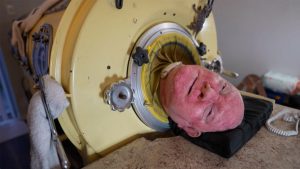
Skin changes such as new moles, dark spots, or scaly patches can often cause concern, especially when they appear unexpectedly. While many skin marks are harmless, some can indicate skin cancer, a condition that affects millions globally each year. Understanding what to look for and how to monitor your skin can be life-saving, particularly when it comes to identifying melanoma, the most aggressive form of skin cancer.
According to the World Health Organization, over 1.5 million new cases of skin cancer are diagnosed globally each year. Fortunately, early detection and treatment significantly improve survival rates, especially when cancers are identified in their early stages.
Why Early Detection of Skin Cancer Is Critical
Early diagnosis saves lives. This is especially true for melanoma, which can quickly spread to other organs if left untreated. The American Academy of Dermatology (AAD) recommends regular self-exams as a crucial method for identifying suspicious skin changes before they become more serious.
There is no single visual feature that defines all skin cancers, but there are patterns to be aware of. By becoming familiar with the natural appearance of your skin and regularly checking for changes in moles, freckles, and other skin features, you can increase your chances of catching warning signs early.

Three Common Types of Skin Cancer
There are several types of skin cancer, but the three most commonly diagnosed are:
- Basal Cell Carcinoma (BCC)
- Squamous Cell Carcinoma (SCC)
- Melanoma
Each presents with unique characteristics. Let’s break down what to look for and when to see a healthcare professional.
1. Basal Cell Carcinoma (BCC)
Basal cell carcinoma is the most commonly diagnosed form of skin cancer. According to the Cancer Council Australia, BCCs account for about 70% of non-melanoma skin cancers.
Common Features:
- Appears most often on sun-exposed areas: face, ears, neck, and shoulders.
- Often looks like a pearly or translucent bump, sometimes with visible blood vessels.
- Can also present as a flat, scaly patch or a sore that won’t heal or keeps returning.
- May bleed, crust, or appear shiny and raised.
Important: While BCC is slow-growing and rarely spreads, delayed treatment can lead to local tissue damage. Always consult a healthcare provider if you notice a suspicious lesion.

2. Squamous Cell Carcinoma (SCC)
Squamous cell carcinoma is the second most common type of skin cancer. It accounts for about 30% of non-melanoma skin cancers and can grow quickly compared to BCC.
Common Features:
- Most often develops on sun-exposed areas such as the face, scalp, ears, and hands.
- Presents as a thick, scaly, or crusty lesion, or a rapidly growing red nodule.
- May bleed, itch, or become tender to the touch.
- Can spread to nearby tissues or lymph nodes if left untreated.
SCC is more likely to affect individuals over 50 and those with fair skin. According to the CDC, prompt diagnosis and treatment offer excellent outcomes.
3. Melanoma
Melanoma is less common than BCC or SCC but is significantly more dangerous due to its high risk of spreading to other parts of the body.
Key Warning Signs:
- May appear as a new mole or a change in an existing mole.
- Often has irregular borders, asymmetry, and multiple colors (brown, black, blue, red, or white).
- Can develop on any area of the body, including areas not frequently exposed to sunlight.
- Can be flat or raised, and sometimes feels itchy or bleeds.
The ABCDE Rule for Spotting Melanoma:
According to the American Cancer Society, use the ABCDE method to assess moles or marks:
- Asymmetry – One half is unlike the other half.
- Border – Edges are irregular, ragged, or blurred.
- Color – Varies in color (shades of tan, brown, black, red, white, or blue).
- Diameter – Larger than 6mm (about the size of a pencil eraser), though melanomas can be smaller.
- Evolving – Any change in size, shape, or color.
If you notice any of these signs, contact a dermatologist immediately.

Nodular Melanoma: A Rapidly Growing Threat
One subtype to be aware of is nodular melanoma, a fast-growing form that is particularly aggressive. It tends to:
- Appear as a dome-shaped lesion, often dark in color (but not always).
- Grow quickly over weeks or months.
- Be firm and may bleed or ulcerate.
Nodular melanoma accounts for about 15% of all melanomas and is more likely to be diagnosed at a later stage due to its rapid development, according to the Melanoma Research Foundation.
Self-Examinations: Your First Line of Defense
Performing monthly skin checks can help you detect skin cancer early. Use a full-length mirror and a hand-held mirror to check hard-to-see areas like your back, scalp, and the soles of your feet.
When checking:
- Look for new growths, changes in moles, or sores that don’t heal.
- Take photographs of any suspicious areas for comparison over time.
- Pay attention to places that don’t receive regular sun exposure—skin cancer can occur anywhere.
If you’re at higher risk (light skin, history of sunburns, family history of skin cancer, use of tanning beds), regular checks and annual visits to a board-certified dermatologist are strongly recommended.

Prevention: Steps to Protect Your Skin
While not all skin cancers are preventable, you can reduce your risk by taking proactive steps:
- Wear sunscreen daily (SPF 30+ broad-spectrum).
- Avoid tanning beds, which increase the risk of all types of skin cancer.
- Wear protective clothing, hats, and sunglasses.
- Seek shade during peak sun hours (10 a.m. – 4 p.m.).
- Check your skin regularly and educate your family members to do the same.
According to the Skin Cancer Foundation, using sunscreen daily can cut your risk of developing squamous cell carcinoma by about 40% and melanoma by 50%.

When to See a Doctor
If you notice:
- A spot that looks different from others
- A mole or lesion that is changing, itching, or bleeding
- A sore that won’t heal
Schedule an appointment with your healthcare provider or a dermatologist. Skin biopsies are typically used to diagnose suspicious growths and determine appropriate treatment.

Conclusion: Awareness and Action Save Lives
Skin cancer is one of the most common—but also one of the most preventable and treatable—types of cancer. By knowing what to look for, practicing sun safety, and consulting your doctor when changes occur, you can significantly reduce your risk.
Make skin checks a part of your monthly routine, and don’t ignore changes in your skin. With early detection, the survival rate for melanoma can exceed 99%, according to the American Cancer Society.
Trusted Sources:
- American Academy of Dermatology
- Centers for Disease Control and Prevention (CDC)
- Cancer Council Australia
- World Health Organization
- American Cancer Society
- Skin Cancer Foundation


